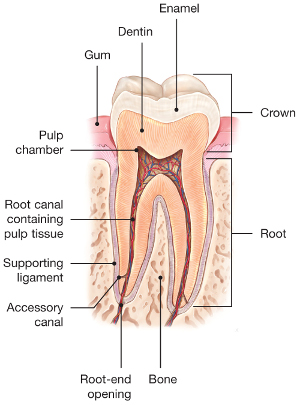3 Roots Molar
Presence of 3 roots in mandibular molars was confirmed in 16 patients of Mongolian origin (15.2%), in 8 patients of Negro origin (7.5%)and in 8 Caucasian patients (6.8%) (Table 1). There was a statistically significant difference (P. Maxillary Second Molar - root formation may be different from first molar - usually three canals - access similar to maxillary second molar (blunted triangular - outline) - always look for four canals - more variability of anatomy in second and third molars compared to first molar. Mandibular first molar - has two well formed roots. External root morphology. The maxillary first molar normally has three roots. The mesiobuccal root is broad distobuccal and has prominent depressions or flutings on its mesial and distal surfaces. The internal canal morphology is highly variable, but the majority of the mesiobuccal roots contain two canals. Oct 08, 2020 A root canal is a procedure that involves removing the pulp that contains the nerves and blood vessels from the center of your tooth and replacing them with a rubbery filling.
- Outline form -
- external outline form evolves from internal anatomy of the pulp as opposed to operative outline form which is based on external anatomy.
- size of pulp chamber
- larger in young teeth
- smaller in older teeth
varies with shape of crown
- age of tooth
- functional activity
- history of tooth
- number and curvature of root canals
- in Endodontic Access preparation convenience form regulates the ultimate outline form
- Convenience form -
- objectives of Endodontic Convenience form
1. unobstructed access to the canal orifice
2. direct access to the apical foramen - freedom within coronal cavity to reach apex in unstrained position
3. cavity expansion to accommodate filling techniques
4. complete authority over enlarging instrument- *inadequate convenience form will lead to:
1. perforation of root
2. ledging of root
3. instrument breakage
4. incorrect shape of completed canal
5. improper debridement Removal of remaining carious dentin -
- eliminates bacteria from interior of tooth
- eliminates discolored tooth structure
- eliminates saliva leaking into prepared access cavity
- if too much tooth structure is lost which prevents placing of rubber dam and sealing against saliva gingivoplasty or crown lengthening may be necessary.- Toilet of cavity -
- all caries, debris and necrotic material must be removed from the pulp chamber before proceeding to root preparation.
Intra-radicular preparation and cleaning and shaping -
- will be discussed at another lecture
CANAL MORPHOLOGY - see appendix in syllabus
- flushing the access chamber prevents:
1. obstruction with debris during canal enlargement
2. soft debris from chamber from increasing bacterial population in canal
3. coronal debris from staining crowns especially in anterior teeth
Digestive System >Pregastric Physiology

Dental Anatomy of Dogs

Dogs are carnivores and have teeth that reflect their meat-eating evolutionary history. Pet dogs, of course, have been turned into omnivores, as most dry dog foods contain substantial amounts of plant material. The dog shown to the right - Lakota the Alaskan husky - might appear to be vicious, but he's actually having lots of fun snarling while playing tug-of-war with a companion. Unless you know the dog, snarling should be interpreted as a warning of potentially aggressive behavior. Some dogs show a related behavior called 'smiling', which is typically a submissive signal and usually associated with tail-wagging. |
A common abnormality in canine dentition is retention of deciduous (baby) teeth. This occurs when the permanent tooth bud does not grow immediately beheath the deciduous tooth, and therefore does not cause the roots of the deciduous tooth to be resorbed. Sparky dog - pictured to the right - has retained canine teeth (the small, more pointed teeth immediately behind his permanent canines). If a retained tooth causes the permanent tooth to erupt in an abnormal position or causes other types of problems, it should be extracted. Picture graciously provided by Ardena Ellard. |
| Dental Formulae | |||||
|---|---|---|---|---|---|
| Deciduous | 3 1 3 3 1 3 | = 14 | Permanent | 3 1 4 2 3 1 4 3 | = 21 |
3 Roots In Molar

3 Roots Molar
| Tooth Eruption | ||
|---|---|---|
| Deciduous | Permanent | |
| Incisors | 4 - 6 weeks | 3 - 5 months |
| Canine | 5 - 6 weeks | 4 - 6 months |
| Premolars | 6 weeks | 4 - 5 months |
| Molars | 5 - 7 months | |
| Maxillary Arcade |
| Maxillary Arcade (lateral liew) |
| Mandibular Arcade |
| Mandibular Arcade (lateral view) |
3 Roots Molar Mass
Author: Melissa Rouge
3 Roots Molar Formula
Send comments to Richard.Bowen@colostate.edu